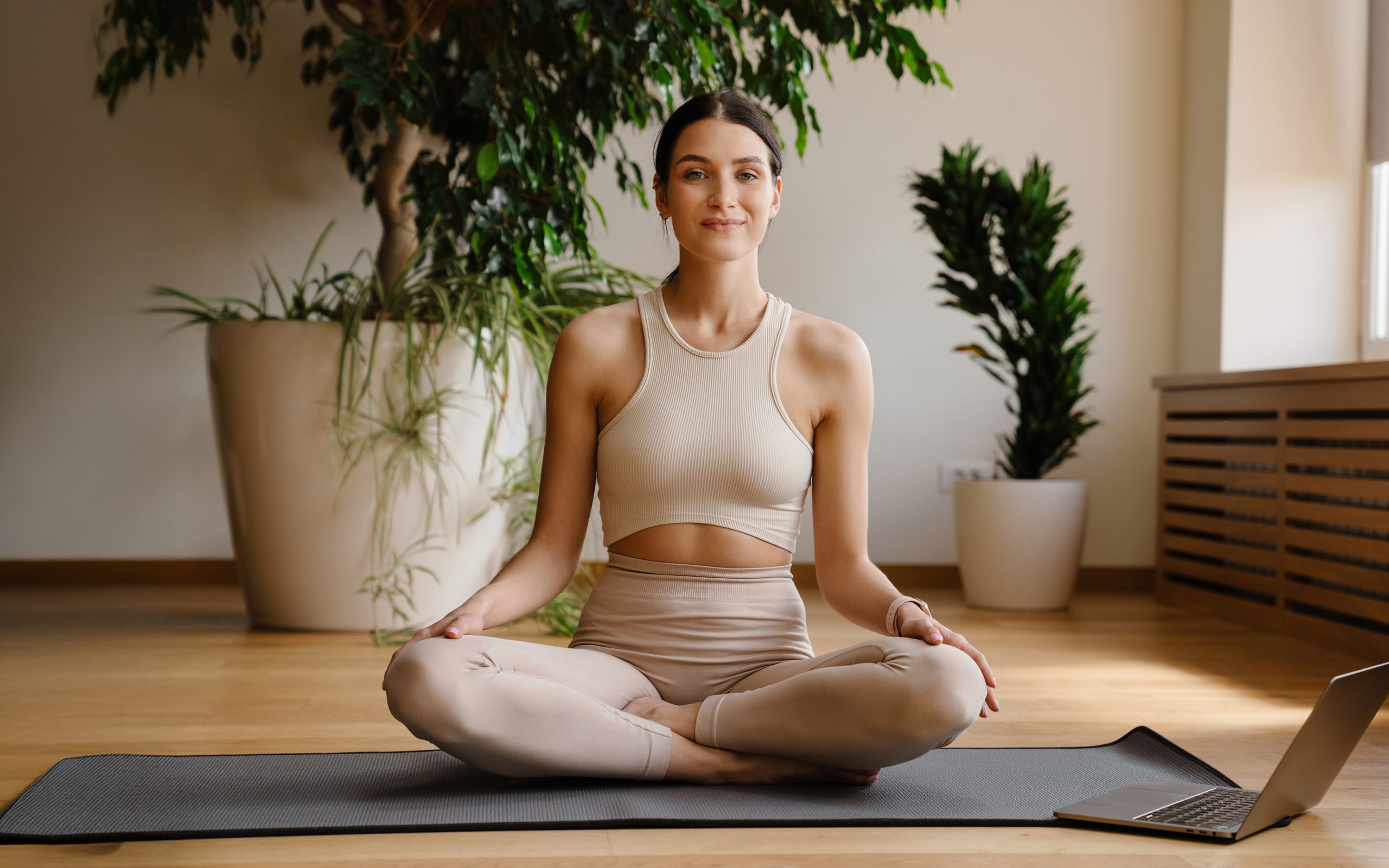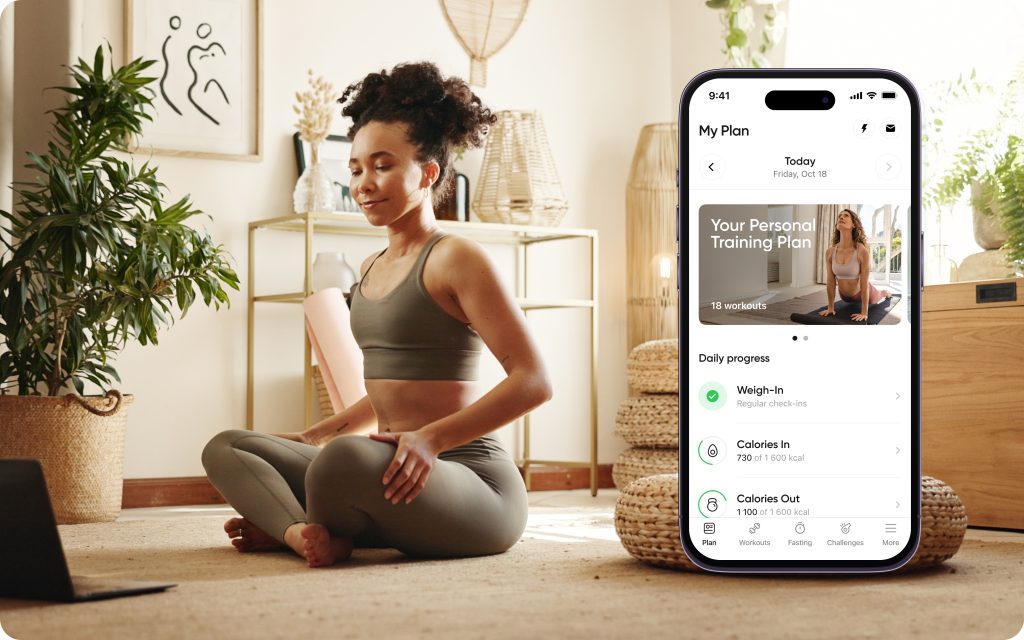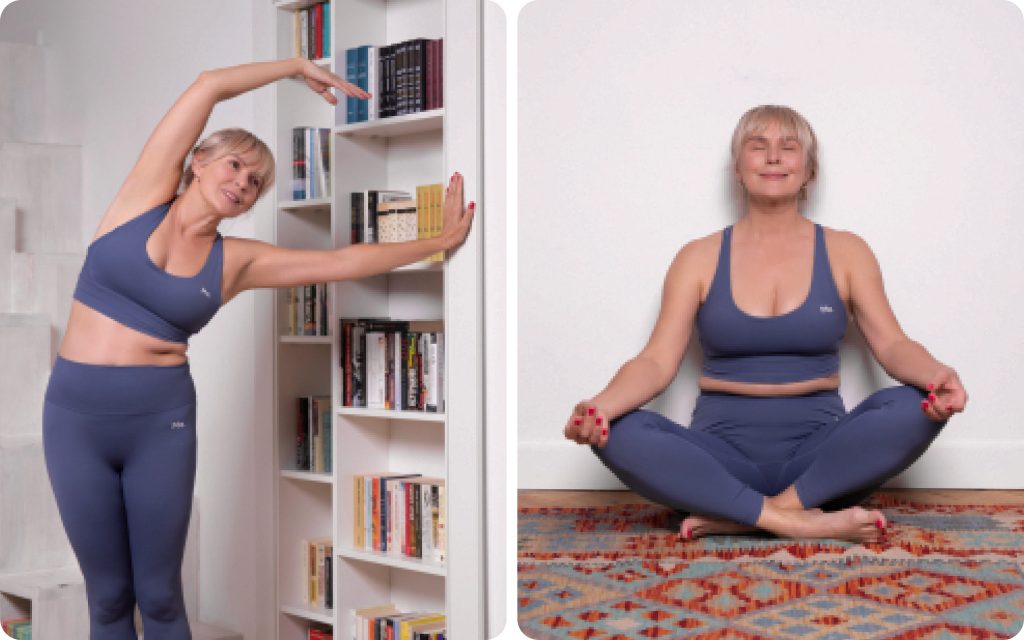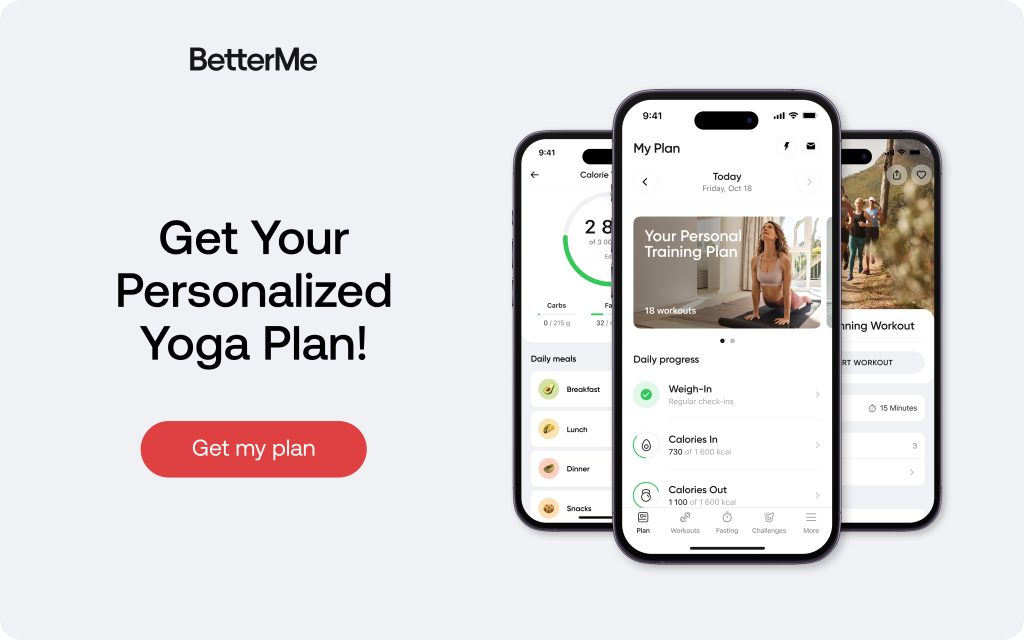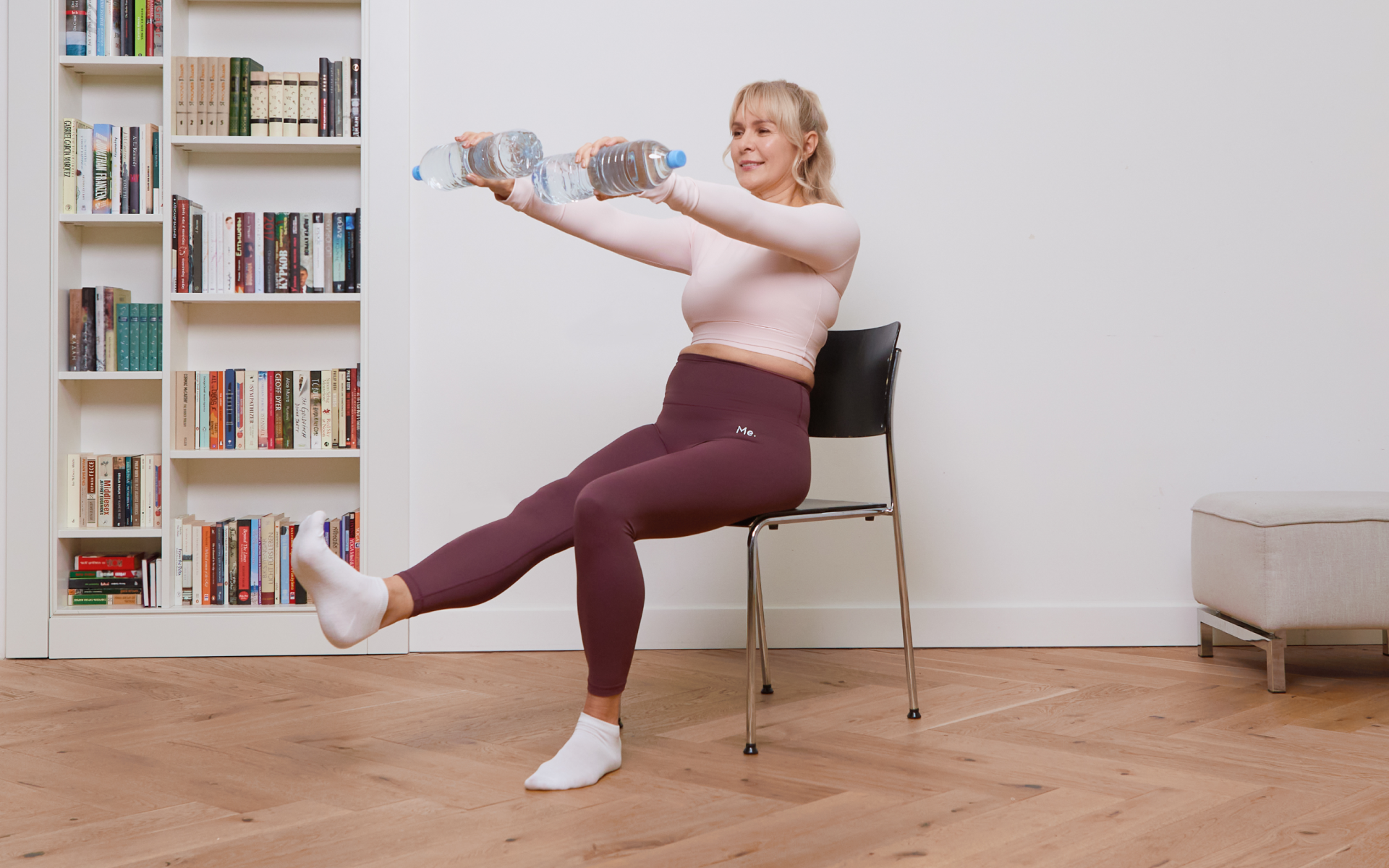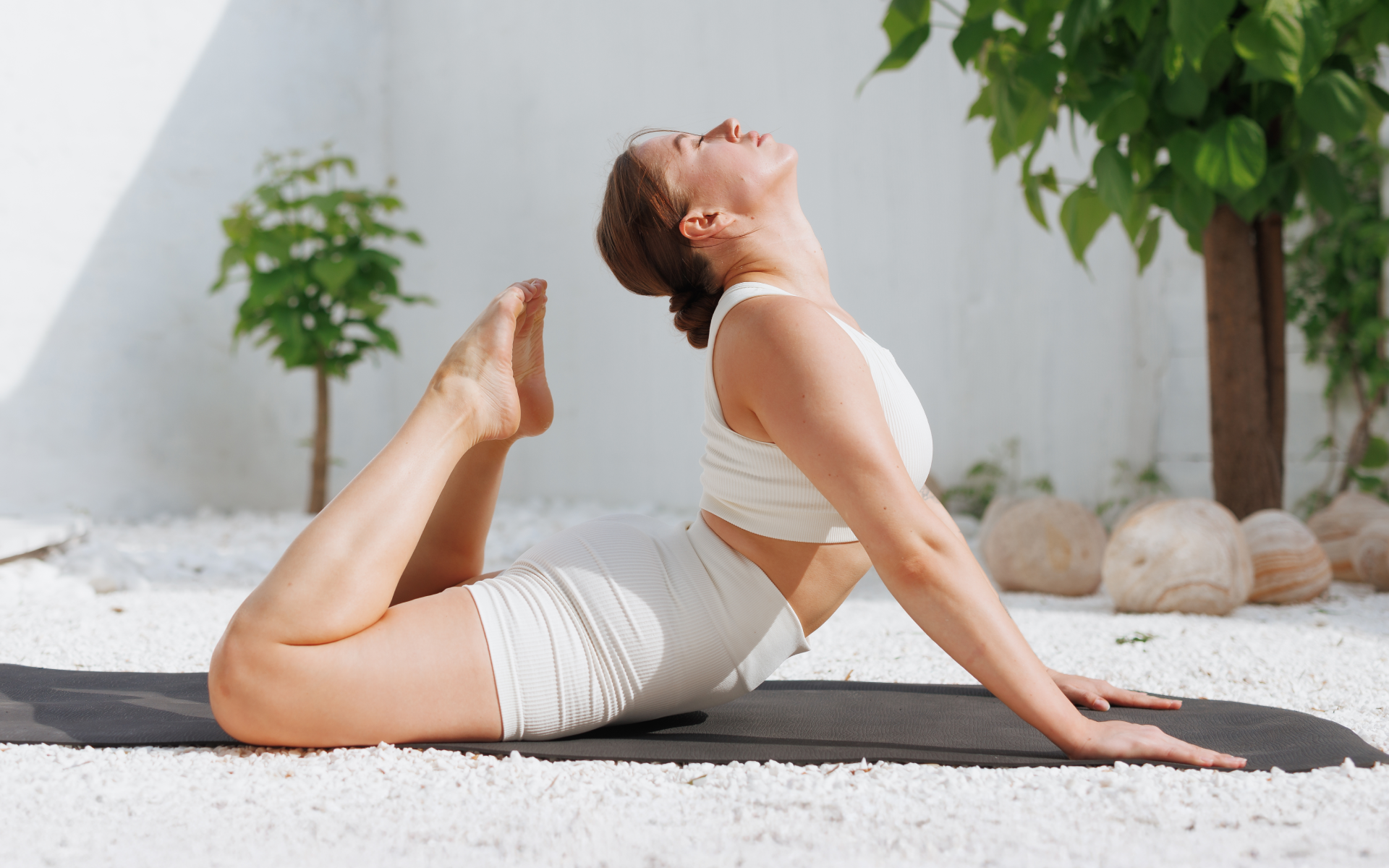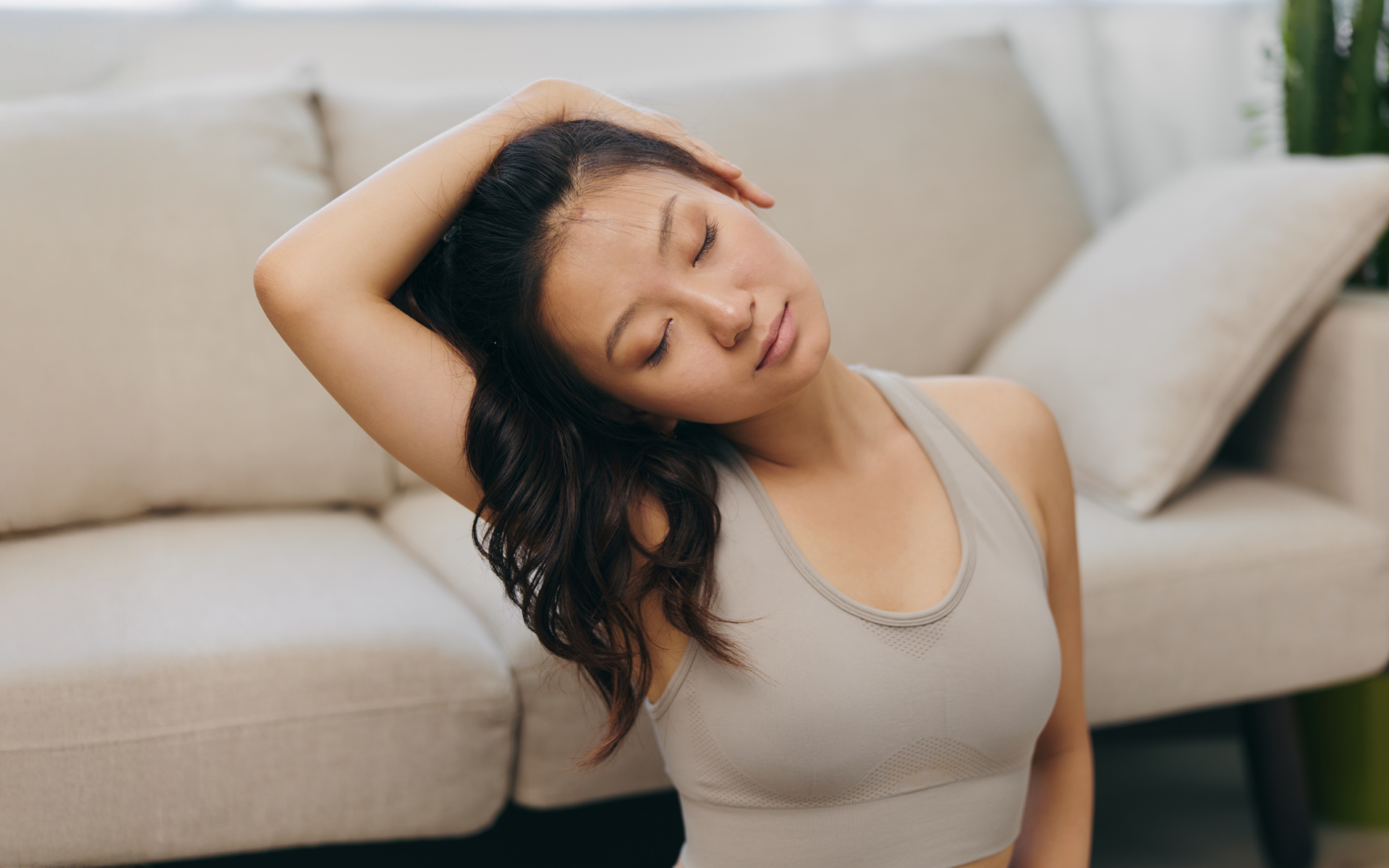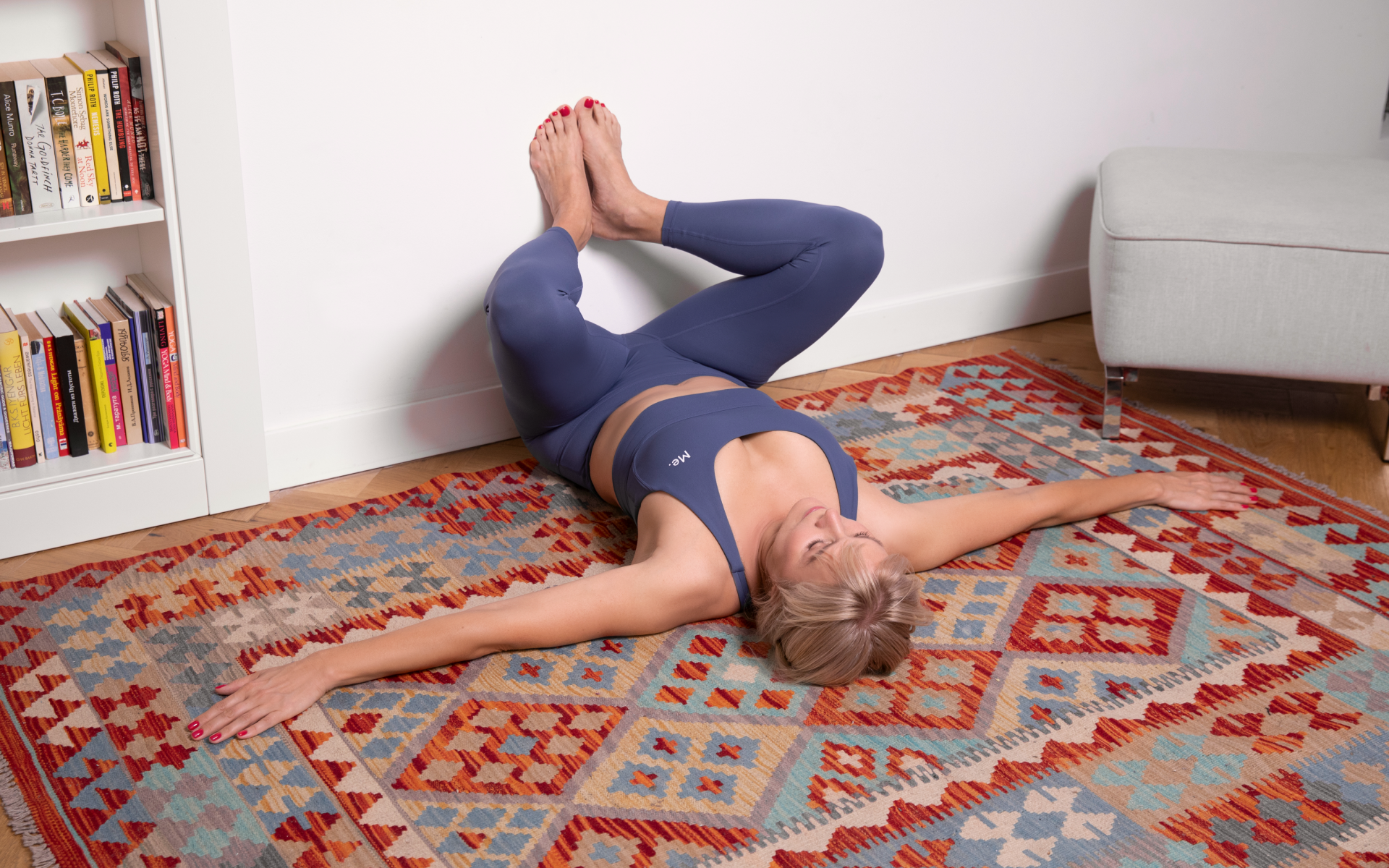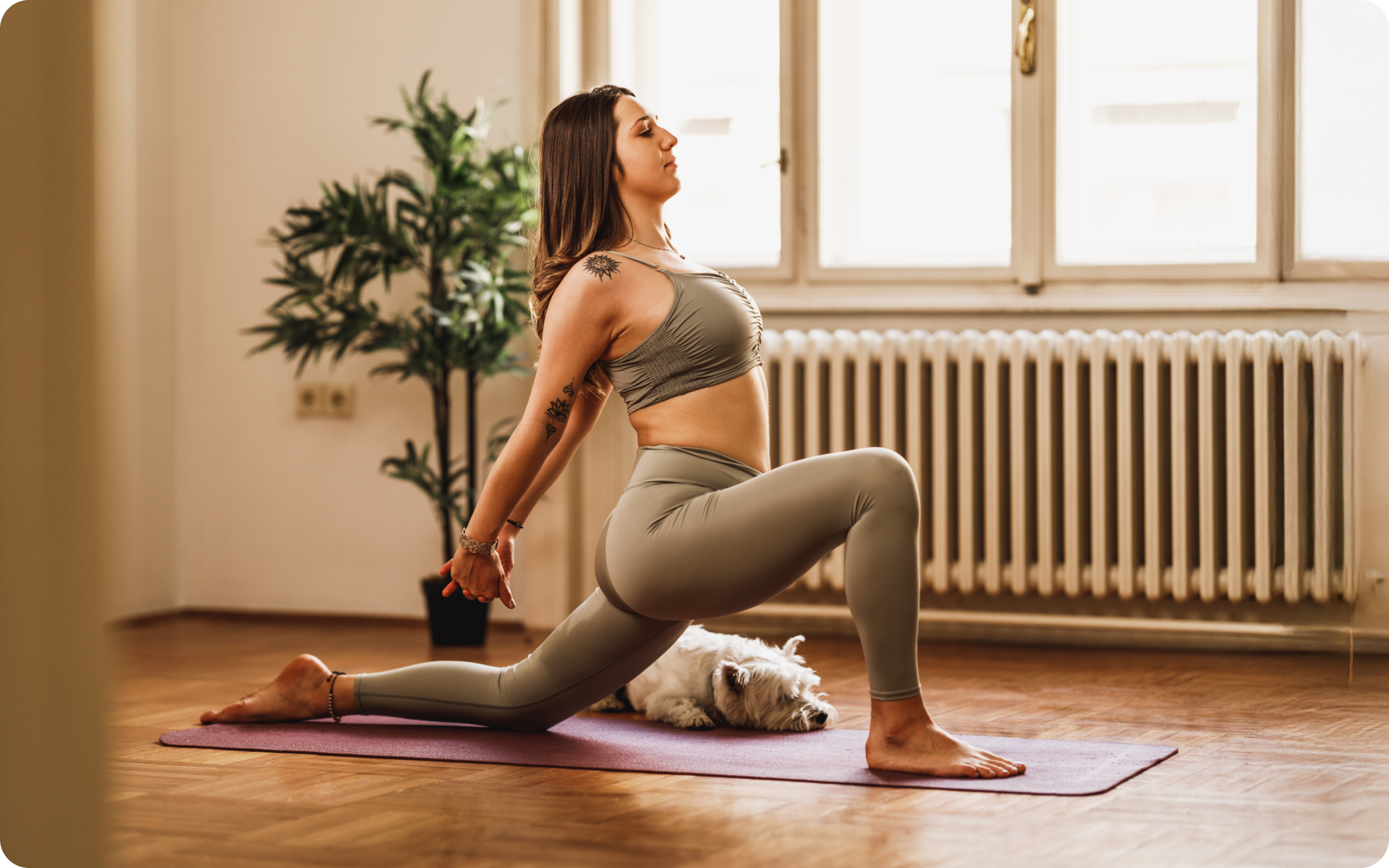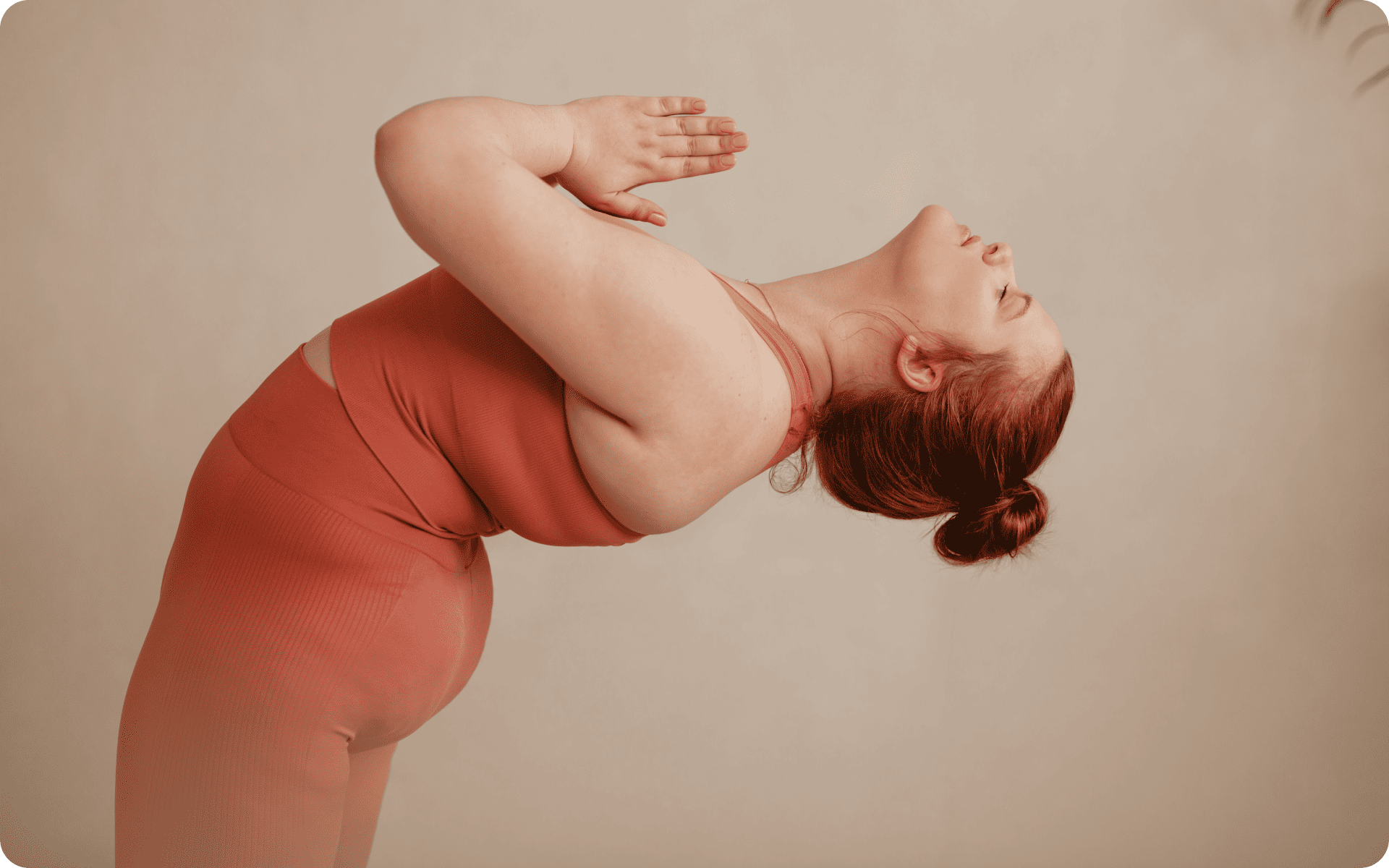If you live with blood pressure management needs, you’ve probably been advised to try yoga, and with good reason. Yoga is one of the most gentle and supportive exercises that can complement routines aimed at promoting balance.. However, before you register for the next available yoga class close to you, we want to advise you to proceed with caution.
Despite all of its benefits, not all poses are ideal for those with blood pressure management needs. In this article, we’ll outline which yoga poses to avoid for those with such concerns. Being aware of such poses can help you avoid a disaster while in class. If you’re using a personal yoga instructor/trainer, letting them know about this could also help them structure the class in a way that suits your concerns. And if you are managing blood pressure concerns or have been diagnosed with a medical condition, it is essential to consult your doctor or a qualified healthcare provider before making any changes to your physical activity routine.
What Is Yoga and How Does It Help with Supporting Normal Blood Pressure?
Is yoga bad for maintaining normal blood pressure? Yes and no. But before we get into this, let’s first understand what this is and how it works.
Yoga is a mind and body practice that falls into the same category as some age-old practices such as tai chi, qigong, and meditation. The roots of this practice can be traced back to India where many people used it for spirituality.
Today, the practice has grown in popularity past India’s borders and is now used in the West to help promote physical and mental well-being. This is done through a combination of yoga’s gentle movements with controlled, focused breathing, and meditation (7, 13).
BetterMe: Health Coaching app helps you achieve your body goals with ease and efficiency by helping to choose proper meal plans and effective workouts. Start using our app and you will see good results in a short time.
So, how does it benefit people with an interest in supporting balanced blood pressure? This is due to two reasons:
- It’s a gentle exercise – If you’ve ever watched people doing yoga, either in real life or online, then you will have noticed how gentle and fluid their movements are. This fluidity and gentleness are what make this practice almost perfect for people with blood pressure management needs because you’re not overexerting yourself, which spikes your heart rate. In fact, this fact was stated in a study published in 2016, where the research referred to Hatha yoga as a mostly light-intensity form of calorie-burning aerobic exercise (2).
- It’s a great way to reduce stress – The meditation part of the practice is what’s to thank for this benefit. Several studies have shown that meditation helps reduce stress, and helps you relax (4, 8).
Read more: Best Chair Yoga For Weight Loss: 8 Poses That Work
Yoga for Supporting Normal Blood Pressure: Which Is the Best Position to Promote Blood Flow Balance?
If we’ve convinced you to try out these mind and body exercises , here are the best poses for anyone who is focusing on blood pressure balance. Your body position can influence your blood pressure.
- Balsana aka Child’s pose
This pose is said to help with calm and relaxation and improve circulation in the body. Physically, the child’s pose also helps you open and lengthen the hips and spine. Here’s how to do it:
- Start by getting on your hands and knees on a soft but firm surface. Bring your big toes together to touch and widen your legs slightly wider than hip-distance apart.
- Exhale and slowly sit back on your knees. Your torso should be erect and between your knees and your palms should rest at the top of your thighs.
- On another exhale, slowly lower your torso between your knees. Make sure your outer ribs are resting comfortably on your inner thighs.
- In relation to your arms, you can either extend them back alongside your torso with your palms facing down or push them forward far beyond your head on the ground with your palms facing down.
- Make sure to tuck your chin in slightly to lengthen the back of your neck and rest your forehead on the floor.
- With each inhale, feel your ribcage expand out to your thighs, and with each exhale, let your body relax toward the floor. Sink into the position as much as you can.
- Hold this position for as long as you can – anywhere from one to three minutes.
Quick facts to note:
- If you can’t get your forehead all the way to the ground, use a thin pillow to support your head.
- If you’re having difficulty getting your bum to reach your heels, place a rolled-up blanket between your thighs and calves.
- Viparita Karani aka Legs-Up-The-Wall Pose
Simply lying down may support temporary balance in your blood pressure.
- Start by lying on your side on the floor – one side of your body, either the right or left side, should be perpendicular to the wall with your bum touching the wall.
- Slowly lower your shoulders and head to the floor and lie on your back. As you roll onto your back, stretch your legs up the wall.
- Ideally, at this point, your feet should be hip-distance apart, but place them apart at whichever distance feels most comfortable to you.
- Adjust your position and make sure your lower body from hips to feet is in a straight line.
- Keep your arms up and comfortable on either side of your head and just breathe, releasing everything and all stress.
- Remain in this position for up to 3 minutes (or longer depending on how you feel) before bending your knees and rolling to your side to get up.
- Savasana aka Corpse Pose
Simply lying down can help quickly lower your blood pressure temporarily.
- Start by lying down on your back with your legs straight and your arms resting alongside your body.
- Tuck your shoulder blades underneath you and draw your chin in slightly.
- Allow your legs and feet to relax and turn out. This allows you to feel the entire length of your spine relaxing along the floor.
You can remain in this position for as long as you want. However, according to Yoga Journal, you should aim to stay like this for up to 20 minutes as this allows your body and mind to fully relax.
- Baddha Konasana aka Bound Angle Pose
This is the post that is widely used during meditations. It helps open up your hips.
- Take a seat on the ground with your legs straight.
- Bend your knees and bring the soles of your feet together, allowing your knees to fall open.
- Your hands can rest on the floor behind you to provide support for your spine, or you can gently hold your feet. With an inhale, lengthen the spine, reaching up through the crown of your head.
- Slide your shoulder blades down and lengthen the back of your neck.
- Stay for 3 to 5 breaths, feeling each inhale expand the ribs outward.
- Setu Bandha Sarvangasana aka Bridge Pose
This pose is believed to help relieve hip and lower back aches while strengthening your core, hamstrings and glutes.
- Lie on your back in the center of your mat, your knees bent, with your legs and feet parallel and hip-distance apart.
- Move your feet closer to your buttocks and press down firmly through both of your feet. Inhale as you raise your hips. Make sure to lift from the pubic bone rather than the navel.
- You have two options for what to do with your hands – either clasp them under your back or leave them on either side of you on the floor.
- Broaden your collarbones and get on top of your shoulders. This helps support your upper body while you’re in this position.
- Firm the outer shins and roll your upper thighs inward. Press down firmly through your heels and lift the back of your thighs and the bottom of your buttocks even higher while keeping your thighs parallel.
- To finish, exhale, release your hands, and lower to the floor. Allow your back to rest in a neutral state as you observe the spaciousness within your chest.
Other positions that may align with blood pressure support goals include ones where the muscles are relaxed or gently stretched and ones that aren’t too physically challenging.
Which Poses Aren’t Good for Your Blood Pressure Support Routine?
Now that you know the ideal yoga positions for blood pressure, which positions should you possibly avoid? As previously mentioned, yoga – for the most part – is a gentle practice, however, some poses aren’t ideal if you have blood pressure management needs.
If your routine calls for positions that involve excessive straining, long-held postures, or those that are taught without the supervision of a certified yoga instructor, you may want to speak to your doctor first. Pick a routine that doesn’t have such poses or try other similar exercises. According to experts, positions where the head is below the heart may raise your blood pressure. You should also avoid fast-breathing practices and aggressive chin-to-chest poses as these contract the throat.
Examples of such poses include the Shirshasana headstand, peacock, and Kumbhaka breath retention poses.
Read more: 9 Seated Chair Yoga Poses You Can Do at Home
What Are Some Tricks to Support Blood Pressure Balance?
There’s no quick fix to managing your blood pressure needs, and it isn’t a switch you can turn on and off at your leisure. However, with some simple tricks (and a dash of patience), you may notice a gradual difference in supporting your blood pressure balance. Here are some simple ways that may assist in maintaining a normal blood pressure level.
Here are some simple ways to lower your blood pressure
- Take a walk
The next time you’re feeling off balance, try and take a walk. Regular exercise, such as walking, may support normal blood pressure balance.
- Manage stress
Stress can impact the body in various ways, and for some people, this may include shifts in blood pressure (9). Stress causes your heart rate to rise and your blood vessels to constrict. It’s known as the “fight or flight” response in the body.
If you’re in a highly stressful situation, stop and walk away. Allow yourself to take time away and practice mindfulness. Not only will this likely help restore a sense of calm, but also, chances are that taking a step back from the issue will help you think critically and find a solution.
- Listen to music
This is a great way to help soothe away any stressful thoughts you may have.
- Talk to a friend
Be it via a phone call, facetime, or a quick lunch, being with your friends and loved ones is a fantastic way to relieve stress that can support your overall well-being and normal blood pressure.
Reasons why BetterMe is a safe bet: a wide range of calorie-blasting workouts, finger-licking recipes, 24/7 support, challenges that’ll keep you on your best game, and that just scratches the surface! Start using our app and watch the magic happen.
- Meditate
If walking, being outside in nature, and listening to music aren’t working for you, try meditation. According to Harvard Health, meditation is a set of relaxation techniques that are intended to encourage a heightened state of awareness and focused attention. If you’re unsure about how to use meditation to support blood pressure balance, this practice comes in many forms, such as transcendence meditation, gratitude meditation, mindfulness, mantra meditation, and many more. Find one that works for you.
For those who are doubtful that meditation is a valuable tool in supporting normal blood pressure, scientific studies have shown that this ‘new age’ practice does more than we give it credit for.
Harvard Health mentions one study that was done on elderly subjects, which showed that those who practiced meditation were more likely to be able to control their blood pressure.
It should be noted that while these tips may offer support for blood pressure balance, they only offer short-term results. If you want better control over your BP in the long term, you’re advised to (5):
- Be more active
- Lose weight if you’re obese or overweight
- Reduce your refined carbs and sugar intake
- Stop smoking and/or drinking
- Eat less salt and processed foods
That depends on who you ask. While Yoga Journal states that this pose is appropriate for people with blood pressure concerns (12), most sources claim that this inversion pose is unsuitable for those with blood pressure management needs. It places your head below the heart, which isn’t considered safe for people with blood pressure issues. As previously mentioned, research has shown that doing yoga will lower and not increase your blood pressure. However, to be on the safe side, you should avoid all positions that put your head below your heart.Frequently Asked Questions
Is downward dog bad for your blood pressure regulation goals?
Does your BP increase after yoga?
The Bottom Line
Yoga isn’t a practice to be afraid of. If it’s done in the right way, it may help you relax and even burn a few extra calories. It’s important to remember that yoga poses to avoid with blood pressure concerns are those that require your head to be anywhere below your heart or cause excessive muscle strain. That aside, you should always pay attention to your body. If you start to feel odd in any position – even those that are considered safe – you should stop immediately and speak to your doctor.
DISCLAIMER:
This article is intended for general informational purposes only and does not serve to address individual circumstances. It is not a substitute for professional advice or help and should not be relied on for making any kind of decision-making. Any action taken as a direct or indirect result of the information in this article is entirely at your own risk and is your sole responsibility.
BetterMe, its content staff, and its medical advisors accept no responsibility for inaccuracies, errors, misstatements, inconsistencies, or omissions and specifically disclaim any liability, loss or risk, personal, professional or otherwise, which may be incurred as a consequence, directly or indirectly, of the use and/or application of any content.
You should always seek the advice of your physician or other qualified health provider with any questions you may have regarding a medical condition or your specific situation. Never disregard professional medical advice or delay seeking it because of BetterMe content. If you suspect or think you may have a medical emergency, call your doctor.
SOURCES:
- A Nap a Day Keeps High Blood Pressure at Bay (2019, acc.org)
- A Systematic Review of the Energy Cost and Metabolic Intensity of Yoga (2016, journals.lww.com)
- Can Walking Lower Blood Pressure in Patients With Hypertension? (2022, aafp.org)
- Effects of Mindfulness-Based Stress Reduction on Blood Pressure, Mental Health, and Quality of Life in Hypertensive Adult Women (2022, pmc.ncbi.nlm.nih.gov)
- High blood pressure: Lowering blood pressure without medication (2019, ncbi.nlm.nih.gov)
- Meditation and a relaxation technique to lower blood pressure (2020, health.harvard.edu)
- Mind–body therapies and control of inflammatory biology: A descriptive review (2016, sciencedirect.com)
- Relaxation response may reduce blood pressure by altering expression of a set of genes (2018, sciencedaily.com)
- Managing Stress to Control High Blood Pressure (2024, heart.org)
- Temps up, blood pressures down in hot yoga study (2019, heart.org)
- Walking and hypertension: greater reductions in subjects with higher baseline systolic blood pressure following six months of guided walking (2018, ncbi.nlm.nih.gov)
- YOGA FOR HIGH BLOOD PRESSURE (n.d., yogajournal.com)
- Yoga: What You Need To Know (2021, nccih.nih.gov)
